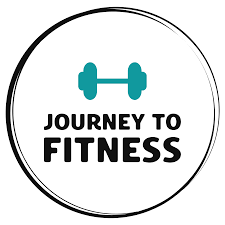Deciding to start the journey of fitness, both physically and mentally, is one of the most rewarding choices. Whether one is just beginning or returning to fitness after a break, it is vital to take that all-important first step. From setting goals to staying motivated, learn about everything one needs to know about starting a fitness journey here.
What is a Fitness Journey?
A fitness journey is your path to improved health, fitness, and general well-being. It is not just about hitting the gym but rather making lifestyle changes that will help you in the long run. Not everyone’s path is the same; it continuously changes as your goals, levels of fitness, and personal circumstances do.
Why Should You Start a Fitness Journey?
The benefits of engaging in fitness are numerous. The best thing is that it shapes up a healthy body, increases energy levels, and elevates your mood, while it also builds better mental resilience. Such exercise will reduce the risk of chronic diseases: heart disease, diabetes, and several types of cancer.
Besides, a fitness journey allows you to set goals, challenge yourself, and develop discipline. These good habits are sure to spill into other aspects of your life and help boost your productivity and happiness.
Setting Clear and Achievable Fitness Goals
The first step in your fitness journey involves setting realistic and achievable goals. If you do not have a focus on what to achieve from working out, it is very easy to lose your focus or even get discouraged. Be it that you want to lose weight, build muscle, improve flexibility, or boost your endurance, your goals should be specific, measurable, and time-bound.
Setting SMART Goals?
A helpful way to create effective fitness goals is by using the SMART framework:
Specific: Your goal should be clear and focused. Instead of saying, “I want to get fit, a better goal would be to say, “I want to lose 10 pounds in 8 weeks.”
Measurable: Make sure your goal can be tracked so you can monitor the progress. If it’s about running, track your distance or time.
Attainable: Make sure the goals you set are challenging but achievable. You want to strive a little to try and reach your goal, but you don’t want to set yourself up for failure either.
Relevant: Your goal needs to come from something important to you with personal interest and value. Ask why this goal counts for you.
Time-bound: Each goal set should have a deadline that acts like an accountability partner to make sure you are on track. You can’t procrastinate as easily when you have a deadline to meet.
Picking the Correct Workout Routine
Once you set your goals, the next thing is selecting a suitable workout routine for your needs. Your workout routine will all depend on what you are trying to achieve in your fitness journey. An example could be if you want to lose weight, you will focus more on cardio and strength training. If flexibility is your goal, yoga or Pilates might be more suitable.
Types of Workouts to Consider
Following are some workout options you could consider:
1. Cardio
Cardio exercises such as running, cycling, and swimming help improve cardiovascular health and burn calories. Incorporating 30 minutes of cardio into your regime three to five times a week will greatly help in increasing your level of fitness.
2. Strength Training
Resistance training also plays an important role in developing one’s muscles and generally strengthening the body. It can be done in the form of body weight squats and push-ups, or even with weights to add on some extra resistance. An added advantage of strength training is that it increases the metabolic rate of the body, helping lose weight.
3. Flexibility and Mobility
This type of training increases flexibility through exercises that are either yoga or dynamic stretching. This kind of training improves one’s range of motion and decreases the chance of injury. Allowing yourself at least two sessions of flexibility training per week will increase your overall fitness level.
4. High-Intensity Interval Training (HIIT)
Most HIIT involves short bursts of high-intensity exercise followed by brief periods of rest. Effective ways to burn fat and increase endurance can be achieved through this kind of workout. If you don’t have much time, HIIT will give you an efficient workout in just 20–30 minutes.
Staying Motivated Throughout Your Fitness Journey
Perhaps the most challenging aspect of your journey can be staying motivated. Most people find it easy and exhilarating when they first start, but after a while, it’s common to just fall out of motivation. However, there are methods you can try to stay focused and see it through.
Tips for Staying Motivated
1. Track Your Progress
Keep an exercise log of workout routines, weight, or other fitness measurements. Sometimes seeing improvements slight can be enough to motivate.
2. Get an Exercise Buddy
This makes it loads of fun to work out when you have a friend with you or join a fitness class. You’ll also have someone there to tell you to stop being lazy on the days you will want to skip exercise.
3. Reward Yourself
Celebrate your successes, be it achieving a milestone in your fitness goals or simply sticking to the schedule for one week. Rewards may include new workout gear or a massage to ease those cramped muscles.
4. Mix It Up
Running through or repeating the same workouts over and over can become very boring. Keep your routine interesting by incorporating different exercises or changing the intensity of your workout. This also helps you avoid fitness plateaus where your progress may stall.
Fueling Your Body with the Right Nutrition
Exercise is just one component. Nutrition also holds a significant place regarding fitness. Be it building up body mass or losing weight, the kind of nutrition one intakes determines the results altogether.
Key Nutrition Tips for Your Fitness Journey
1. Hydrate
Hydration level determines your energy level and, consequently, your performance. Drink enough water throughout the day, but make sure to drink before and after a workout.
2. Eat Balanced Meals
Your diet should consist of a balance in macronutrient consumption-carbohydrates, proteins, and fats. Carbohydrates give energy, proteins help in muscle repair and development, and healthy fats are required to keep your body functional.
3. Plan Your Meals
Meal prepping can help you stay on track and avoid the wrong kind of foods. Try to prep your meals in advance to help keep the right fuel in your body.
Overcoming Obstacles in Your Fitness Journey
First and foremost, it needs to be instilled in one’s mind that setbacks are a typical feature of any workout regimen. Whether you go through physical impediments like injury or mental ones like a loss of motivation, knowing how to work your way out of such obstacles will keep you chugging along.
Common Obstacles and How to Overcome Them
1. Plateaus
A plateau is a condition where your progress has stagnated, yet you are still working out. Changing your workout pattern, increasing the level of intensity, or adjusting nutrition may help you get out of this.
2. Injuries
Injuries can be discouraging, but they do not have to derail your fitness journey. If you get injured, focus on recovery and consult a healthcare professional for guidance. You can modify exercises or focus on other areas of fitness that do not aggravate the injury.
3. Time Constraints
One of the most common reasons individuals get off the fitness plan is that of a busy schedule. Remember that even small workouts are much better than nothing. Consider HIIT or bodyweight exercises that you can do in less than 30 minutes in your home.
The Importance of Rest and Recovery
Not many understand that rest is part of their struggle to keep fit. Resting days include muscle recovery and growth, preventing burnout and injury. This rest should be at least one to two days in a week depending on the intensity of the workouts.
Active Recovery
You do not need to be completely inactive on rest days. Activities like walking, stretching, or yoga are great to do on active recovery days. These modes of activity keep you moving without overly stressing your body.
Conclusion: Commit to Your Fitness Journey
Your journey of fitness is very personal and a long-term commitment; it does take time, but it’s all worth the effort in the end. Setting clear goals, choosing the right workout plan, staying motivated, and fueling your body with proper nutrition will set you up for success long term.
Patience and persistence are the keys. Sometimes progress may not be so rapid, but every little step you take means more closeness to your target. So now, with dedication to your fitness journey, your future self will thank you!






